
This is my third blog post about implementing reading workshop in the primary classroom. In my first post, I introduced what reading workshop is and benefits of using this approach to teach reading in your classroom. In my last post, I wrote about how to implement reading workshop into your classroom, whether it be at the beginning of a new school year or any time during the school year, and shared my must-teach procedural mini-lessons. Click on the links below to check up on this blog post series:
Introduction to Reading Workshop
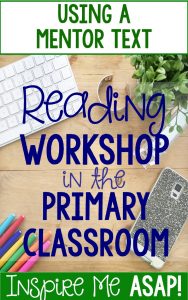
In this blog post, I will write about how to use a mentor text to enhance your reading workshop mini-lessons. Once your students have demonstrated success with the following the expectations and structure of reading workshop and good reading habits and behaviors have been established, you are ready to start teaching some content mini-lessons.
This is where the time that you have spent in the past couple of weeks, building up your students to become independent readers, will pay off big time.
- Readers can identify the structure of reading workshop- mini-lesson, independent reading, sharing/closing.
- Readers identify and follow reading workshop expectations to build reading stamina.
- Readers use book nooks to organize all of their reading workshop materials.
- Readers choose just-right (or appropriate) books from the classroom library on their assigned shopping day.
- Readers reflect on their growth as a reader.
Once readers have these procedural mini-lessons mastered, you are ready to move on to using mentor texts to teach your content related mini-lessons! Let’s begin by having a common understanding of what a mentor text is.
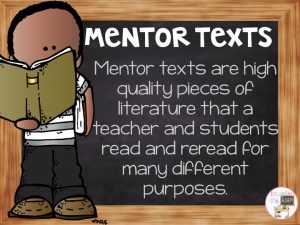
Mentor texts are pieces of literature that the teacher and students refer back to and reread for many different purposes. Mentor texts are HIGH QUALITY pieces of literature that not only inspire and engage your readers, but also serve as an excellent example of good writing. Mentor texts provide excellent opportunities to explicitly teach different strategies and skills to your readers, such as identifying the theme or character traits/changes.
The teacher reads the mentor texts aloud during the read aloud time, not during the reading workshop time. Instead, the teacher REFERS back to the text DURING the mini-lesson, as an example of the strategy or skill that he/she is teaching. Let’s use A Bad Case of Stripes by David Shannon as an example.
I begin by first reading aloud the story during my read aloud time. This would be different than my reading workshop block. I like to have my read aloud time at the end of lunch/recess because it is a nice way for the kids to calm down and focus their attention back to learning in the classroom. When I read the mentor text aloud for the first time, I am simply reading it for the enjoyment and pleasure. There is no skill, strategy, or focus for the read aloud.
Once I read the book aloud, I am now ready to use that as a mentor text during my reading workshop mini-lessons. Since A Bad Case of Stripes is a fiction genre, then all of my mini-lessons that I will teach will be focused on skills and strategies for this genre. I focus on one skill or strategy at a time. Below is an example of some skills or strategies that I might teach, based off of A Bad Case of Stripes. Notice, I write them in “I Can” statements.
- I can identify the main character in the story.
- I can explain how the main character grows and changes from the beginning to the end of the story. I can describe characters in a story (e.g., their traits, motivations, or feelings) and explain how their actions contribute to the sequence of events. Or, I can identify how Camilla’s actions contributed to the sequence of events.
- I can identify the character traits of Camilla Cream.
- I can infer specific character traits about Camilla Cream. I can use clues about the character’s actions, words, and feelings to make an inference. I can use the text to support my thinking.
- I can identify the point of view of A Bad Case of Stripes. I can support my thinking by using evidence from the text.
- I can identify the theme of the story, A Bad Case of Stripes, using the text for support.
- I can write a summary of the story.
- I can identify Camilla’s external (outside) and internal (inside) character traits. I can use the text to support my ideas.
All of the the mini-lessons are taught by using the mentor text as an example.
For example, if my mini-lesson was teaching about cause and effect relationships, then I would explicitly teach this skill. I teach about what the “cause” and “effect” means, and then use the mentor text to identify an example of a cause/effect relationship. Since the students are already familiar with the text, I do not have to waste any of my precious minutes during my mini-lesson time to read aloud the story.
Now although I don’t reread aloud the mentor text for each mini-lesson, I DO refer back to the text as the basis for all of our ideas, answers, and examples. Common Core State Standards require students to “prove” their thinking with evidence from the text.
For another mini-lesson, I will use the same text to teach a different standard:
I can identify the main character in the story. I can explain how the main character grows and changes from the beginning to the end of the story.
Again, I will use A Bad Case of Stripes as my mentor text and explicitly teach how Camilla Cream grew and changed from the beginning to the end of the story.
Once I use the mentor text as the example for my mini-lesson, the students are then ready to apply what they learned to their own books they are reading during their independent reading time. If I teach about how a character changes from the beginning to the end of a story for the mini-lesson, then my students also find an example of how the a character changed throughout the story in a book THEY are reading. Students apply what was taught during the mini-lesson with the mentor text to the book they are independently reading.
Let’s look at another mentor text, The Gingerbread Man Loose in the School. After the initial read aloud of the book, I referred back to the text for several different mini-lessons over the course of a couple of weeks.
My first mini-lesson was retelling the story, using key details.
The next mini-lesson was asking and answering questions about key details in the text. Now, remember, you already read aloud the text. So for the mini-lesson, you are just focusing on explicitly demonstrating the use of the strategy or skill you are teaching.
Another favorite book of mine is Charlotte’s Web.
I use this heart-warming novel for so many reasons- my students love the characters and experience a plethora of different emotions as the plot progresses. And, of course, they love comparing the book to the movie.
Even though this is a lengthy novel, I use the same pattern as with any other text: begin by reading aloud the text (at my read aloud time) and refer back to the same text for different mini-lessons during reading workshop.
For example, I may read aloud chapters 1 and 2 after lunch on Monday and then refer back to those chapters during reading workshop time, which starts at 1:30 in the afternoon.
During my mini-lesson, refer back to the text and use it as an example for the strategy or skill I am teaching. If you read Charlotte’s Web before, then you know what strong, vivid characters E.B. White writes about. Consequently, many of my mini-lessons teach about character inferences, traits, changes, comparisons and motivations throughout the novel. I constantly refer back to the novel throughout my mini-lesson.
In the picture below, you can see an example of one of our reading workshop mini-lessons- identifying and inferring character traits for Charlotte and Wilbur, with an emphasis of providing textual evidence. To keep this mini lessons “mini,” I taught these lessons over the course of a few days.

Students then applied what they learned during the mini-lesson to their own books during independent reading time. Students found evidence in the text about specific character traits in the fantasy books they were reading.
Other mini-lessons for Charlotte’s Web include:
- I can identify how the author used an example of foreshadowing and use the text to support my answer.
- I can identify the genre for Charlotte’s Web and support my thinking by using evidence from the text.
Now, I would love to hear from you! What are some mentor texts that you use to teach your RW mini-lessons? Do you have any questions for me?
What to learn more about Reader’s Workshop?
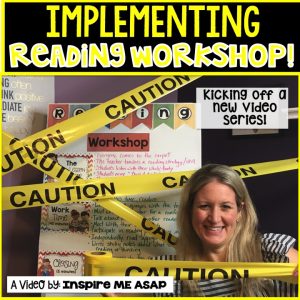
Check out my video series by clicking on the links below!
View my videos on my Teachers Pay Teachers Store: Readers Workshop Video Series
View my videos on my YouTube Store: Reading Workshop Video Series
Reading Workshop in the Primary Classroom Blog Post Series
Take a sneak peak at what is next in this 8 post series!

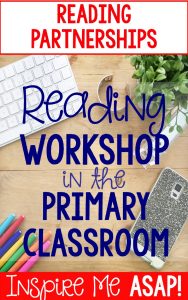
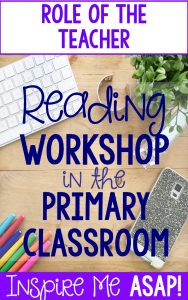


Looking to Implement Reading Workshop in YOUR classroom? Check out the units of study included in my Reading Workshop Bundle!
Units included in this bundle:
Unit 1, Implementing Reading Workshop in your Primary Classroom
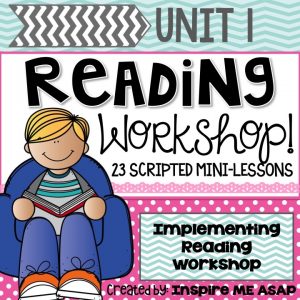
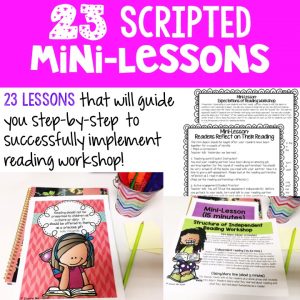
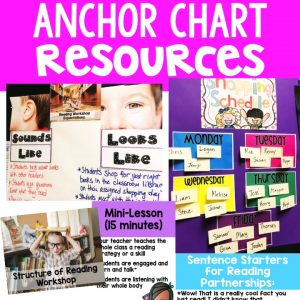
Unit 2, Reading Workshop: Reading is Thinking


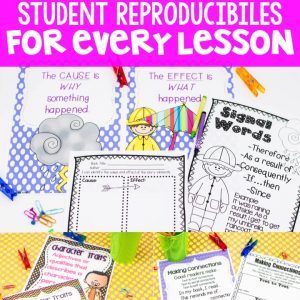
Unit 3, Implementing Reader’s Notebooks
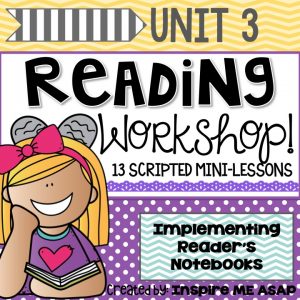
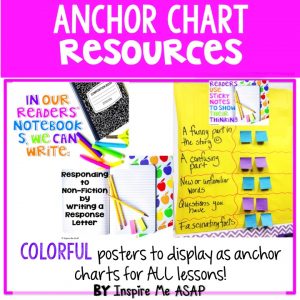
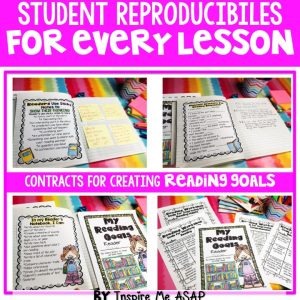
Unit 4, Informational Text Features
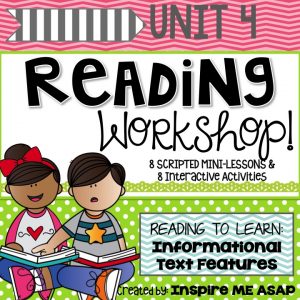

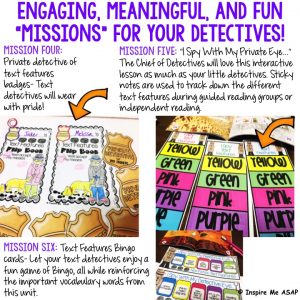
Unit 5, Character Study Unit
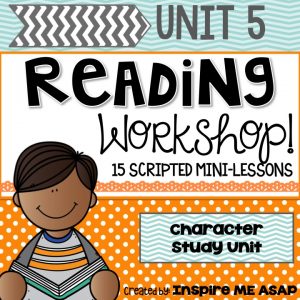
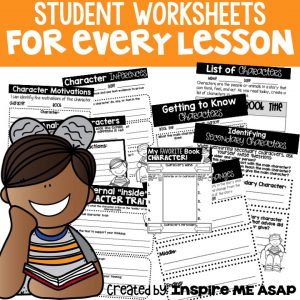
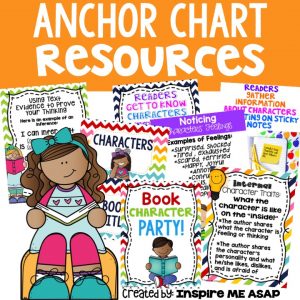
Unit 6, Dive Deep with Book Clubs
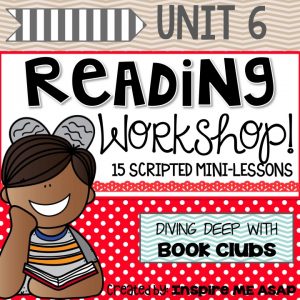

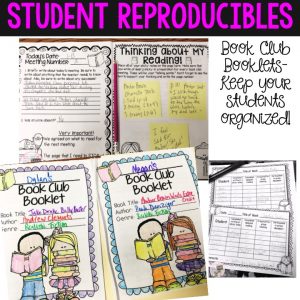
Other resources included in this bundle:
Reading Workshop Book Awards Celebration



You can purchase the BUNDLE on my Teachers Pay Teachers store by clicking HERE.
Save 10% by purchasing this bundle directly from my website.

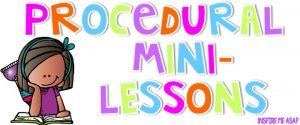
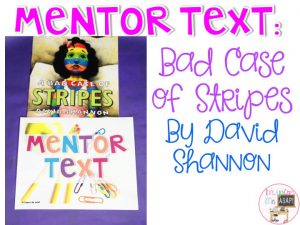
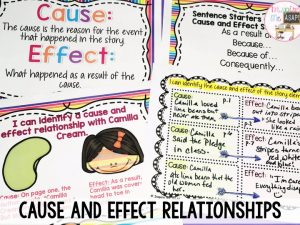
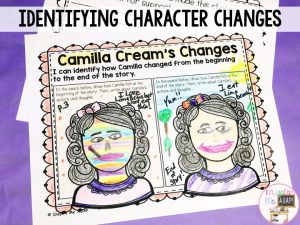
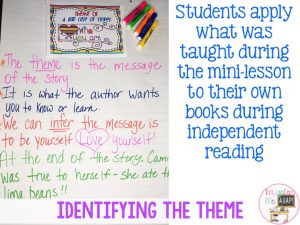
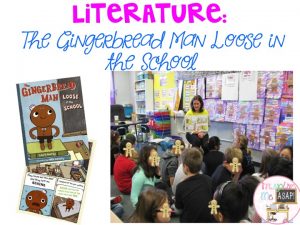
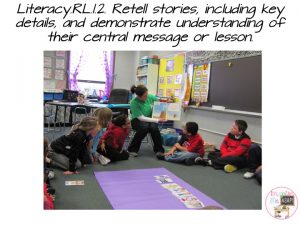

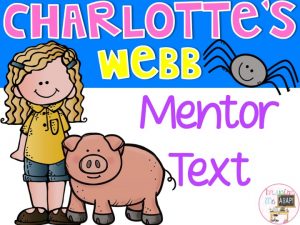
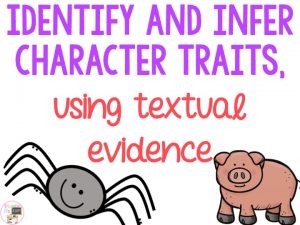
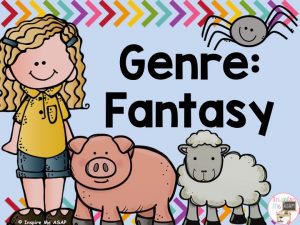
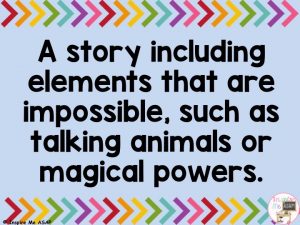
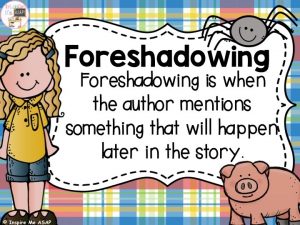
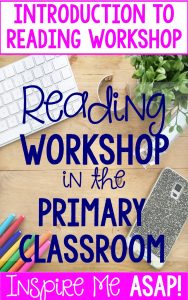
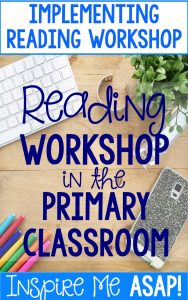




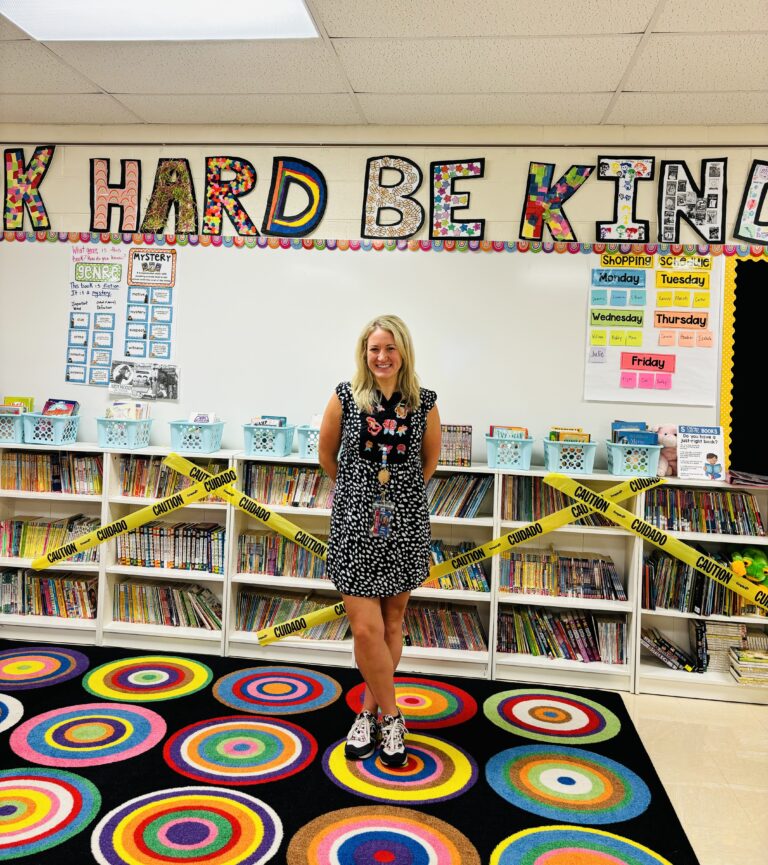



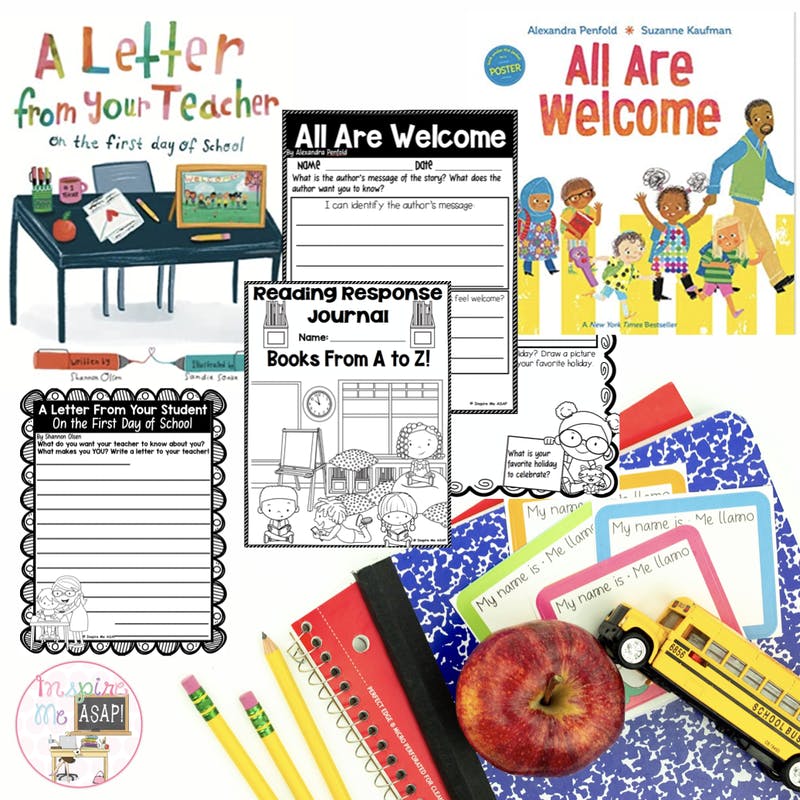
7 Responses
Thank you for these informative posts about Reading Workshop!!! Could you tell me when your students complete the activities that go along with your mini lesson like the Camilla Cream character change (pictured) and the adorable character traits over Charlotte and Wilbur (pictured)? Could you also tell me if you read the book Charlotte’s Web to them or do you read it together? I find that I ask my students to practice the skill in their own reading but the same ones don’t even attempt to try the skill unless I give a specific assignment for that skill. I am also very interested in how you assess with reading workshop!
Thank you for all the valuable information!!
Hello Megan,
Thanks so much for your questions and let me see if I can help…
After I am done with my mini-lesson (no longer than 15 mins.), my students then transition to work time for at least 45 minutes, before we have a short 5 minute closing/sharing. During this work time, my students are: reading independently, completing work connected to the mini-lesson (such as the character change with Camilla), participating in a book club, partner reading, ect. I am meeting with groups or conferencing with students. Longer projects (such as the character traits with Charlotte and Weber) are completed with their book clubs.
I use Charlotte’s Web as a read aloud, a separate part of the reading workshop block. I am the only one (not the students) who is reading aloud the text during this time. During the RW mini-lesson, I briefly refer back to the chapters I read aloud.
In regards to your concern with specific students not attempting the skill during their independent reading, here are some suggestions:
1. My students use reader’s notebooks during their independent reading time. I check EVERY notebook EVERY day to make sure they completed some writing/responding to the text. It only takes about 10 minutes, which I do during their specials. This helps tremendously to hold them accountable.
2. When your students go to sharing/closing time, do they share their work with a partner? If they did not complete their work, then they have nothing to share. Maybe they could finish the work during the closing/sharing time instead.
3. Is motivation or off task behavior the problem? Or do they need more guidance because they really just dont understand what to do? Once you narrow down the reason why they are not doing the work, you can begin to problem solve how to help them.
Does that help?
Let me know if you have any other questions!
:) Melissa
Hello! I have loved following this blog series so far! I can’t wait for you to post the rest. I really want to implement reading workshop into my classroom, but am very nervous as I have never taught using this model before.
Could you give an example about what kinds of things students do in their reader’s notebook? I know you said they should be applying the mini lesson. Do you always give them a specific prompt or question to answer about their independent book? How long do they spend on their independent reading during the 45 minutes? Do they split this time up with the book clubs everyday? Or does it just depend on the day? Is this the only independent reading time kids have? Or do you do another time for independent reading in addition to during the workshop?
Thank you so much!
Hi! Where can I find Operation Next year? I looooove this!
Hello Kelly,
Thank you for your message! You can find that freebie right here:
https://inspiremeasap.com/shop/aprilend-of-year/hip-hip-hooray-its-a-field-trip-to-the-next-grade
THANKS! :)
Is there a way to make this work in a kindergarten classroom that mostly has non- or early emergent readers?
Yes! Absolutely! You can expose your non- and early emergent readers to mentor texts, that are above their reading level. Since you are using the mentor text as an opportunity to teach different strategies and skills, you can select a book above their reading level. Authors like David Shannon and Cynthia Rylant, books like Henry and Mudge, all are great starting points for you to model different strategies and skills. Let me know if you have any other questions…and good luck!